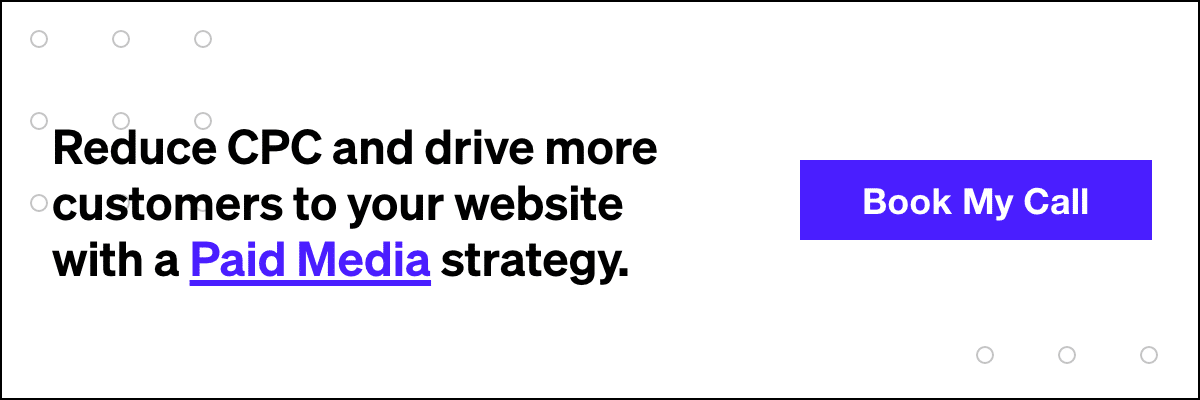5 Things Your PPC Agency Should Always Be Monitoring

An extremely common misconception that people have about online advertising is that ads can run completely on their own following the launching of a PPC campaign. When offering PPC management services at your digital marketing agency, your final destination or end goal is never the ad campaign launch; in reality, that should only be the beginning of the work.
From there, your job is to use the incredible amounts of data at your disposal to optimize the performance of the ads and the account as a whole. In the long run, those routine optimizations are what maximize both conversion volume and cost efficiency, effectively saving your client from spending their marketing budget extraneously or ineffectively.
PPC digital marketing agencies are no stranger to this notion. Most PPC marketing agencies know the essential optimizations that can help lift account performance metrics. However, the significant differentiator between a “good” PPC agency and a great PPC agency is how proactive great agencies are at making strategic optimizations to not only rebound from dips in performance but accelerate and accentuate positive performance as well. To do this, they need to keep a close eye on the KPIs and metrics that most directly affect account health and cost efficiency.
But as a business, how can you be sure that your PPC marketing team is doing everything it can to monitor those KPIs?
In the spirit of helping answer that question, we have broken down a list of the 5 key things that your PPC manager should always be monitoring to ensure optimal account performance and cost efficiency:
Negative Keyword Scrubbing
Negative keyword scrubbing is the backbone of healthy account and PPC campaign structuring. At its most essential level, it is a PPC agency best practice wherein advertisers go into their Google AdWords account and, using the search term data at their disposal, exclude the search terms that are bleeding money, not converting, or are unrelated to the business or offering by adding those terms to a negative keyword list.
Now, why is this important? Google charges advertisers on a per-click basis (CPC). As a PPC agency, if your ads are consistently showing up for unrelated, unqualified, or ineffective search terms, there is also a lower likelihood of those users converting on-site, since the business offering differs from the intent of their original search. This will not provide your client a bottom-line return, and will spend their ad dollars extraneously.
Related: Keyword Research Tips for the PPC Beginner
As a business, you need to know that your PPC agency is taking these proactive steps to continually optimize your ad spend, or else marketing and advertising spend is being used irresponsibly or left on the table with a missed opportunity.
Google Ad Extensions
Ad extensions were rolled out for ads in 2013, and yet many PPC advertising agencies still don’t understand how to use these valuable PPC ad assets to their fullest functional capacity to improve performance. For those less familiar, extensions are essentially added components to an ad that provide additional information about the business or service to the user, which heightens that user’s likelihood of finding information they resonate with. Understanding ad extension best practices results in specific benefits for your agency’s success. So what are the benefits exactly? Why is this something that your PPC agency absolutely needs to be monitoring and optimizing? There are a few reasons. First, the use of ad extensions help advertisers take up as much “real estate” on the Google SERP as they possibly can. As a business, why does this matter? On Google there are only so many first page positions where your paid search ad is eligible to appear, and 95% of searchers do not even click to the second page of search results.
Related: 6 New Best Practices to Help You Write Expanded Text Ads
When you take up more SERP space by building out your ad using ad extensions, you can effectively limit your immediate competition by pushing other ads off the first page. This can lead to increased CTR, click volume, and higher conversion rates due to not only lessened competition on first page SERP, but extra relevant information for the user to leverage.
Quality Score
Quality Score is Google’s overall rating of relevance of both your keywords and PPC ads, graded on a score from 1-10. In an account, non-branded keywords that have a quality score of 7 or higher are considered “healthy”, and anything lower than that typically means that there is room to improve its score. Branded keywords should always be sitting at a 9 or 10 as their score. Furthermore, it’s comprised of several key components that a PPC agency always needs to be keeping a pulse on. Namely:
- Expected Click-Through Rate
- Expected Landing Page Experience
- Expected Likelihood of Conversion
We don’t have an exact concept of how much each of these respective factors “weigh” in the Quality Score determination process compared to any other, so effective PPC agencies and managers should consistently monitor all of them. This task is much simpler within AdWords than it previously had been.
Related: The 4 People Every PPC Team Needs to Succeed
AdWords just recently rolled out the ability to check on each individual Quality Score factor, helping advertisers pinpoint where they may be falling short so that they can optimize for it. Previously, advertisers only had insight as to their overall Quality Score out of 10 points, with no discernable explanation as to why, which meant that advertisers had to dig into the data just to see what might be the cause of a lower score.
That functionality is now available in “Columns” in the AdWords UI. Simply navigate to the “Keywords” tab and select “Columns” → “Modify Columns”. From there, navigate down to “Quality Score.” This allows you to see not only your overall Quality Score, but the performance of each respective factor you wish to look at as well, including historical data benchmarks.
But the question becomes, why is this important for your PPC manager? Again, it comes down to performance relative to cost efficiency. If you look at each respective factor of Quality Score, it is essentially Google’s way of ensuring that users are seeing information that is intended to be as relevant as possible to what they are looking for. In that effort, Google rewards ads that have a higher Quality Score with a lower average cost-per-click, to discourage companies with huge budgets from bidding on any keywords regardless of its pertinence to the business or service offering, and stealing market share away from smaller businesses that may be exactly what the searcher was looking for.
Why should this matter to a business? Because if your PPC agency is letting your Quality Score slip by not monitoring each of these factors and making adjustments to remedy any dips in score, they are effectively costing you extra money for each click, and spending your money irresponsibly. This can then adversely affect your conversion volume due to eventual budgetary constraints, CPA, and bottom-line revenue, so saying that Quality Score is an important thing to keep an eye on is a tremendous understatement.
Channel Performance
In the modern day and age of digital advertising, businesses often look to get as much representation in every facet of Google as they can, in order to maximize their exposure in the Google marketplace. This means that businesses are more inclined now than ever to leverage especially YouTube advertising, Google Shopping Ads (PLAs), Google Display Ads, Search Ads, and Gmail Sponsored Promotions (GSPs).
This is all well and good, but only if your PPC agency is consistently ensuring that each of those channels are performing efficiently to reach their target audience; otherwise, this presents a very unique opportunity to spend wildly without optimizing your client’s potential or realized return on ad dollars spent. Great PPC agencies breakdown channel performance several times per week, to assess Conversion volume, Conversion Rate, Click-Through Rate, Cost Per Acquisition, and Spend levels. From there, they look to the channels that are driving the most significant and cost effective results, and make optimizations designed to allocate more of the budget to those channels that are showing success.
Related: Fast Track Your Paid Advertising Efforts By Avoiding These 5 Key Mistakes
What this does for your client is maximizes the value of their ad dollar once again. This helps you as an advertiser “play to your strengths”, by enabling channels that are performing well to continue doing so without budgetary constraints restricting or limiting their success. Great agencies understand that just because a channel is part of a PPC strategy, that doesn’t mean that you need to continue spending your client’s ad budget there no matter what.
Your primary job as an advertiser isn’t to execute on a PPC strategy just for the sake of having done so, but in the greater effort of maximizing the value your client gets from that ad campaign – and a big part of that is continually maximizing efficiency and spending ad dollars where the market (Google) data indicates the highest likelihood for success lies.
Competitive Landscape
A big theme in these tips has been geared toward maximizing your client’s cost effectiveness in order to properly reach their target audience. One reason why this is such a major consideration is because your cost-per-click can fluctuate really easily depending on the competitive nature of your industry. AdWords determines your keyword cost-per-clicks (CPCs) as an advertiser in a virtual bidding or “auction” environment, meaning that you only need to be willing to spend $.01 more than the next advertiser in the market for a keyword in order to rank one position higher than them.
Though that is a bit of the technical side of AdWords, it’s hugely important. Why? Because if keyword CPC bids are determined in the form of an auction, then competition level, and the specific players, dictate how much you’ll need to pay per click for similar (or the same) keywords to rank in a higher position. CPC indirectly will translate to how much you need to pay per acquisition, and what your Return on Ad Spend (ROAS) is.
Related: How to Outsmart Your Competitors in AdWords
As a PPC agency, you need to be monitoring the competitive landscape proactively, because this can be an indicator as to whether CPCs will be increasing due to high competition and many advertisers competing to rank first for the same keywords. You can glean valuable insights as to keywords your competitors are currently bidding on that you may not be, which you can then include in your PPC campaigns to ensure that you’re as visible as possible relevant to your competitor. One tool that is great for this is https://www.semrush.com/.
You can also see how often you and a competitor are bidding on the same keywords, and then assess from there whether those keywords are still worth pursuing in the future or whether you need to re-think your keyword strategy to give your client more exposure. This can be done directly in the AdWords interface by pulling an “Auction Insights Report” located in the “details” section of the “Keywords” tab. If you have a high overlap percentage with a competitor who has greater brand recognition or a high amount of spend, it will be hard to seize much market share using those keywords.
Wrapping Up:
Tying this all back together, the big takeaway here is that as PPC advertisers we have a responsibility to keep our client’s best interests in mind at all times. This means that agencies must consistently monitor key indicators of overall account performance to drive the most meaningful traffic and website actions at the best possible cost for their PPC advertising campaign. This list is really the bare minimum that an effective agency should be monitoring for you, and if they aren’t, money is being blown or left on the table.
Our Editorial Standards
Reviewed for Accuracy
Every piece is fact-checked for precision.
Up-to-Date Research
We reflect the latest trends and insights.
Credible References
Backed by trusted industry sources.
Actionable & Insight-Driven
Strategic takeaways for real results.






